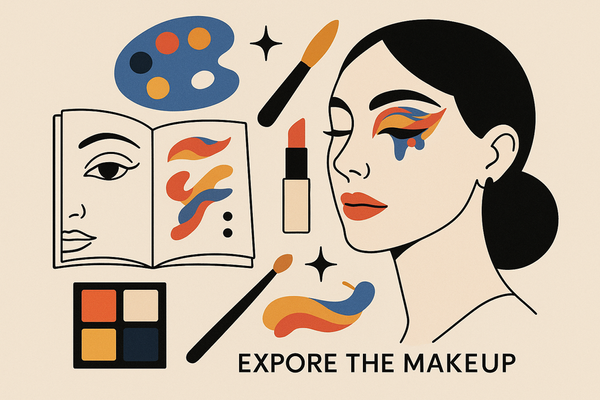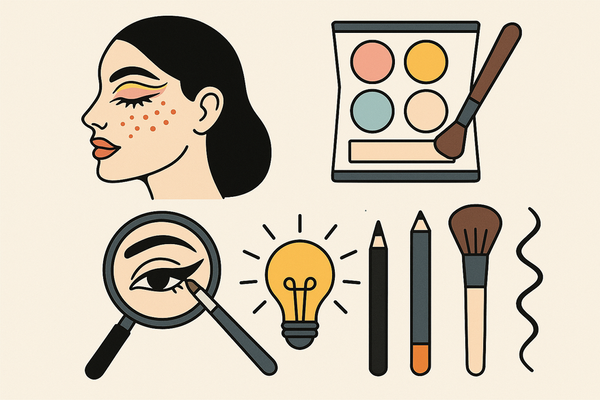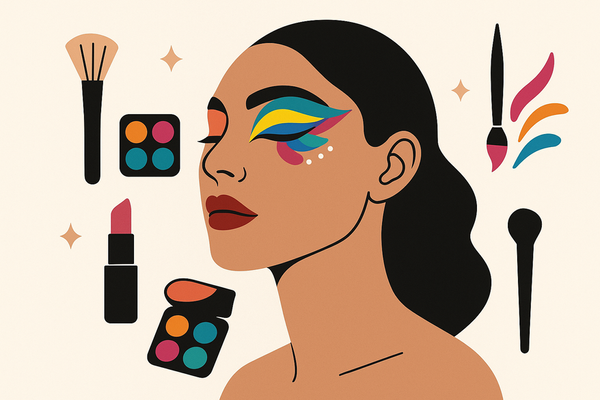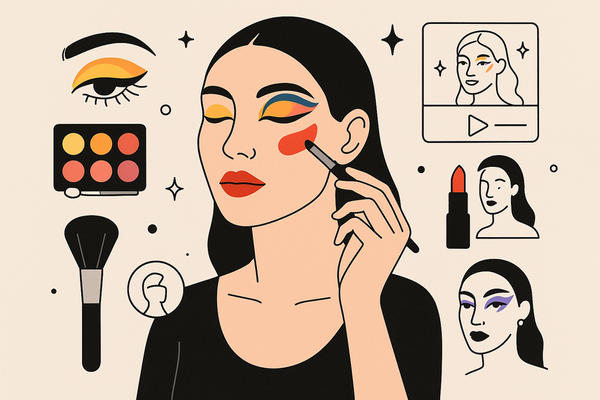Unlocking the Art of Creative Makeup Designs: A Comprehensive Guide
Explore creative makeup designs with bold colors and artistic techniques. Discover tools, materials, and step-by-step guidance to create unique looks.
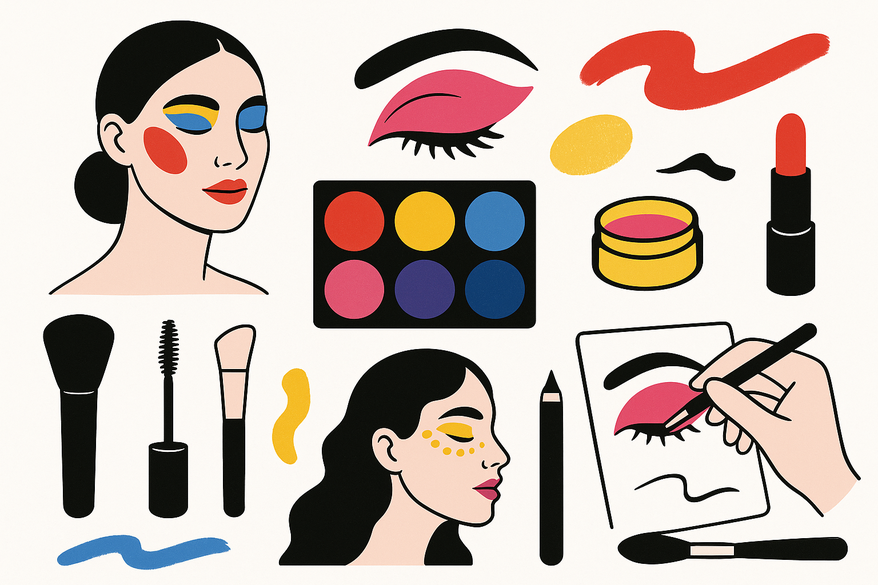
Estimated reading time: 7 minutes
Key Takeaways
- Artistic Canvas: Transform skin into a storytelling medium with bold pigments, textures, and 3D elements.
- Historical Roots: From ancient rituals to punk rock, makeup has always reflected culture and innovation.
- Essential Tools: Use high-pigment shadows, special-effects kits, precision brushes, and digital moodboards.
- Step-by-Step Workflow: Plan with sketches, prep skin, layer color, add textures, and seal your masterpiece.
- Inspiration Sources: Draw from art movements, nature, fashion, pop culture, and emerging tech like AR and AI.
Table of Contents
- Introduction to Creative Makeup Designs
- Definition and Overview
- Historical Context
- Key Elements and Techniques
- Tools, Products, and Materials
- Step-by-Step Process
- Inspiration and Trends
- Conclusion
Introduction to Creative Makeup Designs
Creative makeup designs push the boundaries of cosmetics by treating the face and body as an artistic canvas. They let you tell a story, stand out at events, or simply express your inner artist. Creativity in makeup matters because it opens doors to self-expression, helps us share narratives through color and form, and redefines what beauty can look like.
Definition and Overview
Creative makeup designs are innovative cosmetic applications that transform the face and body into an artistic canvas. They use bold colors, sculptural forms, mixed-media elements, and embellishments to create high-impact visuals—think graphic liners that slice through lids, metallic pigments that reflect light like liquid metal, or three-dimensional appliqués that look alive on skin. By contrast, traditional makeup focuses on concealing blemishes and enhancing natural features; creative cosmetic art prioritizes imagination, abstraction, theatrical flair, and visual storytelling.
Historical Context
The art of beautifying the face has roots in ancient rituals:
- Egypt: Priests and pharaohs painted with kohl and red ochre to denote rank and protect against evil.
- Greece: Performers used stark, geometric face paint to embody gods and heroes.
- East Asia: Kabuki actors refined patterns of white, red, and black to represent spirits.
Twentieth-century shifts accelerated experimentation:
- 1920s: Flappers wore dramatic ruby lips and smudged pencil liner for nightlife rebellion.
- 1960s: Mod icons like Twiggy sported graphic black-and-white eyes for a pop-art effect.
- 1970s: Punk rockers shaved brows and spiked lashes in neon green and electric blue.
Today, social media and AR filters let artists share and remix looks instantly, driving rapid evolution in textures, finishes, and digital makeup artistry.
Key Elements and Techniques
Creative makeup designs rely on a toolkit of bold elements and painterly techniques:
- Vivid pigments – Electric neons, metallics, duochrome powders
- Unconventional textures – Glossy gels, matte clay masks, iridescent mica blends
- Sculptural shapes & 3D appliqués – Geometric liners, silicone ridges, prosthetic pieces
- Mixed-media effects – Rhinestones, loose glitters, hand-painted mini landscapes
Techniques include avant-garde application (exaggerated lines, surreal shapes), layering & stippling for depth, airbrushing for seamless blends, and projection mapping for interactive visuals. Color theory is essential—use complementary and contrasting hues to create focal points and balance.
Tools, Products, and Materials
A well-stocked kit is essential for creative makeup designs:
- High-pigment shadows & loose pigments for full payoff
- Special effects kits: skin-safe adhesives, silicone prosthetics, modeling wax
- Precision brushes & sponges for crisp edges and color packing
- Airbrush system for fine mist and full-face coverage
- Unconventional items: cosmetic-grade glitter, mica flakes, magnetic pigments, feathers
- Tech tools: AR try-on apps and AI-driven shade mixers
Choose professional-grade, hypoallergenic materials for safety and longevity, and plan looks with digital moodboards before purchasing.
Step-by-Step Process
- Conceptualize: Sketch face charts or create digital moodboards. Map theme, colors, textures, and focal points.
- Skin Prep: Cleanse, moisturize, and prime for a smooth canvas.
- Base Layer: Apply foundation evenly, contour with cream or powder, and highlight.
- Color Application: Build pigments in thin layers, blend edges, use tape or stencils for crisp lines.
- Texture & 3D Elements: Affix rhinestones, sculpt with modeling wax, attach prosthetics.
- Detailing: Use fine brushes for tiny patterns, stipple for texture, sharpen edges.
- Finishing Touches: Set with powder or spray, seal glitter, and photograph stages under consistent lighting.
Expert Tip: Practice new techniques on paper or in digital apps before skin application, and always perform a patch test for allergies.
Inspiration and Trends
Where do creators find their spark? Sources include:
- Art movements like Impressionism, Surrealism, Abstract Expressionism
- Nature & fantasy – butterfly patterns, galaxy speckles, floral sculptural forms
- Fashion events – runway and editorial looks
- Pop culture & film – sci-fi prosthetics, period-drama twists
- Emerging avant-garde ideas in Avant-Garde Makeup Trends and how AI inspires creativity in Pushing Beauty Boundaries with AI
Conclusion: Creative Makeup Designs
Creative makeup designs combine artistic vision, technical mastery, and innovative tools to redefine beauty and storytelling. From ancient rituals to digital AR filters, this art form empowers self-expression in performance, fashion, and everyday life. Experiment with color, texture, and 3D effects to develop your own signature style, document your process, and keep pushing the boundaries of cosmetic art.
For a seamless digital complement to your creative process, try Makeup Check AI. Its instant shade-matching tools and AI-driven inspiration can help bring your artistic visions to life.
FAQ
- What distinguishes creative makeup from traditional makeup?
- Creative makeup emphasizes imaginative color palettes, 3D elements, and narrative-driven designs, while traditional makeup focuses on concealment and feature enhancement.
- Which tools are essential for avant-garde makeup?
- High-pigment shadows, skin-safe adhesives, silicone prosthetics, precision brushes, airbrush systems, and digital moodboarding tools are key.
- How can I practice new techniques safely?
- Start with paper face charts or digital mockups, and always do a small-skin patch test before full application.
- Where can I find inspiration for unique designs?
- Look to art movements, nature, fashion runways, pop culture icons, and emerging AI-driven makeup trends for fresh ideas.
- Can I integrate digital tools into my makeup workflow?
- Absolutely. AR try-on apps and AI shade mixers can streamline your creative process and refine color accuracy.

